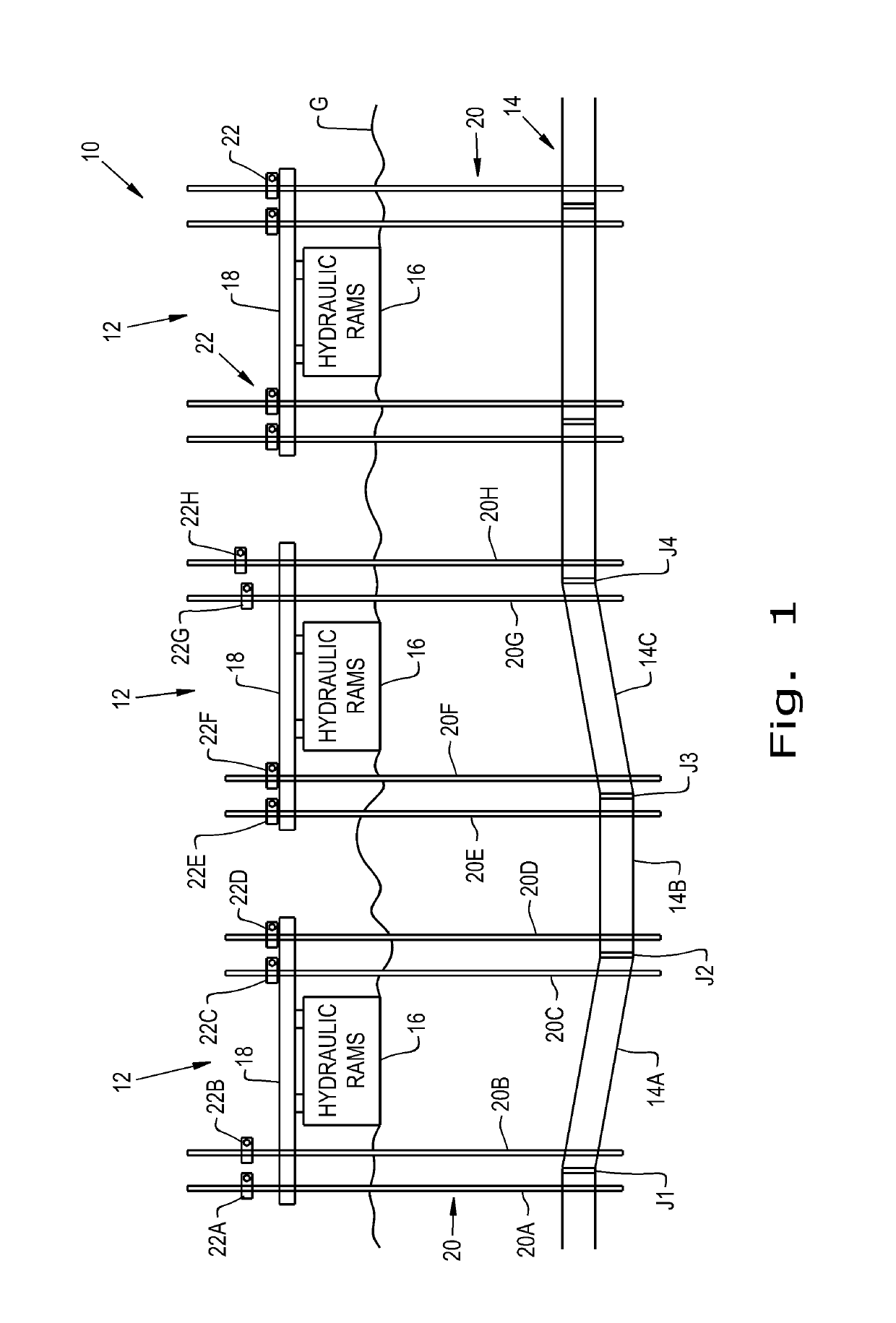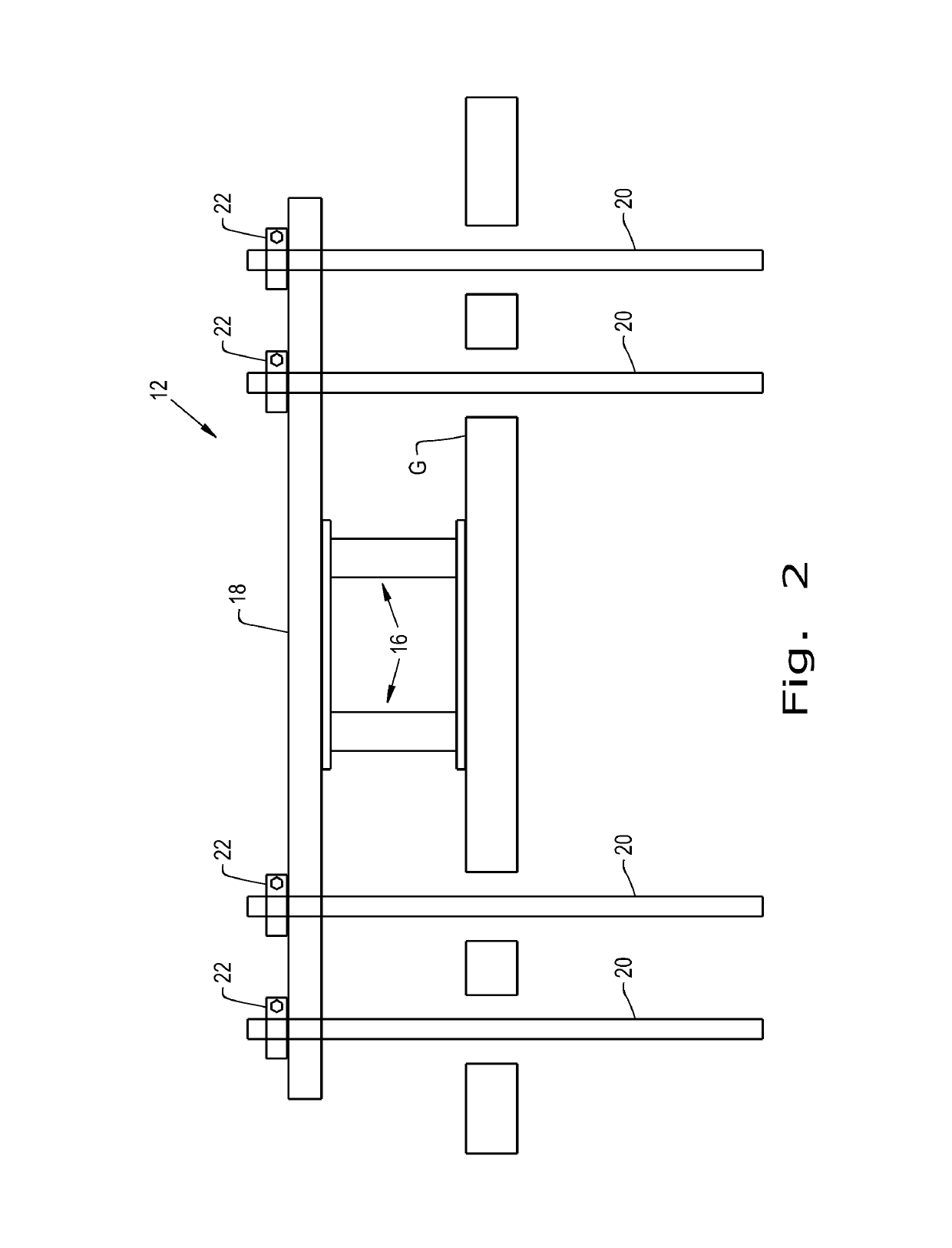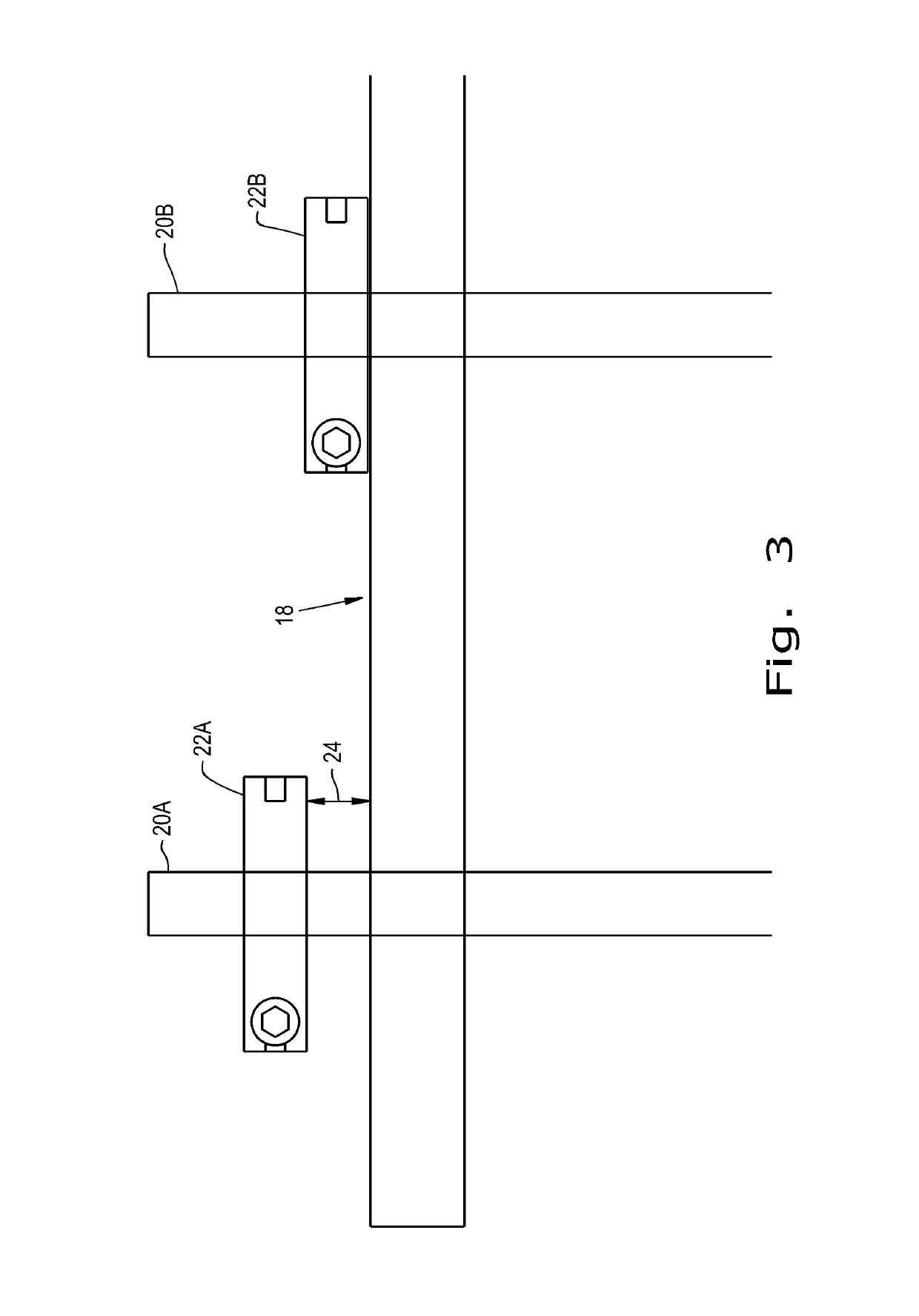Buried pipe lifting device and method
a lifting device and buried pipe technology, applied in the direction of lifting devices, soil shifting machines/dredgers, constructions, etc., can solve the problems of sewer backup, debris in the pipe, sewer sag, etc., and achieve precise staged movement of sections and eliminate the effect of underground utility sag
- Summary
- Abstract
- Description
- Claims
- Application Information
AI Technical Summary
Benefits of technology
Problems solved by technology
Method used
Image
Examples
Embodiment Construction
[0025]Referring now to the drawings, and more particularly to FIG. 1, there is shown a system 10 for the in situ relocation of a buried pipe 14. There are shown three underground utility in situ relocation mechanisms 12 each having hydraulic rams 16 also referred to as a lifting device 16, a beam 18, lifting members 20 and lifting collars 22.
[0026]Three pipe segments are identified as segments 14A, 14B, and 14C with joints J1, J2, J3 and J4 of the segments identifying where each segment 14A, 14B, and 14C is coupled to an adjacent pipe segment. Pipes 14 once installed sometimes develop sags or what is also referred to as a belly, which is illustrated by segments 14A, 14B, and 14C, in perhaps a somewhat exaggerated manner, to illustrate the problem that system 10 corrects.
[0027]A survey of the condition of pipe 14 may reveal the location of the sage of pipe segments 14A, 14B, and 14C as well as the locations of joints J1, J2, J3 and J4. Such a survey, perhaps with a sensor package ins...
PUM
 Login to View More
Login to View More Abstract
Description
Claims
Application Information
 Login to View More
Login to View More - R&D
- Intellectual Property
- Life Sciences
- Materials
- Tech Scout
- Unparalleled Data Quality
- Higher Quality Content
- 60% Fewer Hallucinations
Browse by: Latest US Patents, China's latest patents, Technical Efficacy Thesaurus, Application Domain, Technology Topic, Popular Technical Reports.
© 2025 PatSnap. All rights reserved.Legal|Privacy policy|Modern Slavery Act Transparency Statement|Sitemap|About US| Contact US: help@patsnap.com



